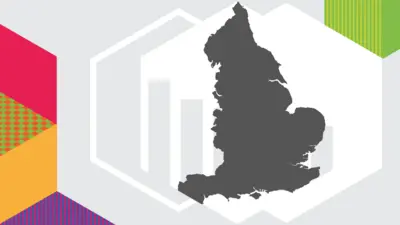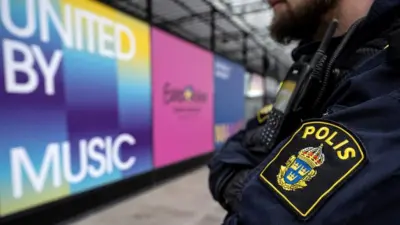We've updated our Privacy and Cookies Policy
We've made some important changes to our Privacy and Cookies Policy and we want you to know what this means for you and your data.
Covid-19: Nottinghamshire to return to tier 3 after lockdown
Image source, Getty Images
Nottinghamshire will return to the highest tier of Covid-19 restrictions, it has been confirmed.
The move comes after a four-week England-wide lockdown, which has seen Nottingham city and the county's infection rates drop.
Unlike last time, when the county agreed additional restrictions, tier rules will be the same across England.
The council said they understood this means measures such as the 21:00 alcohol sale curfew have been dropped.
Though the Department of Health and Social Care acknowledged "an improvement" in infection rates in the city and county, it highlighted the "very high" levels among those over 60 (211 per 100,000) and a "high" proportion of hospital beds taken up by Covid patients.
Health Secretary Matt Hancock said tier levels will be reviewed "in a fortnight" and kept "regularly under review after that".
Image source, Getty Images
Nottingham became one of the first areas in the country earmarked for tier three restrictions after it ended up with the highest infection rate across the UK in early October.
After lengthy discussions, it was then agreed to put the whole county into the same tier, which came into force from 30 October and included extra rules such as the ban on late night alcohol sales.
One day later, Prime Minister Boris Johnson then announced all of England would enter lockdown, which began on 5 November and ends on 2 December.
Tattoo parlours, tanning and nail salons and some businesses such as betting shops and auction houses also had to close.
Nottinghamshire County Council said they understand local rule variations will no longer apply.
'Bitter blow'
Nottingham City Council leader David Mellen, who had written to the prime minister to stress the work done to cut rates, expressed disappointment at the area's tier placing.
"It's a bitter blow for people in Nottingham who have done the right thing, followed the rules and done an incredible job of driving down the rate of Covid infections from the highest in the country to below the national average," he said.
"We had hoped that this would have meant we would be spared going into tier three and the extra restrictions that come with that being imposed on local people and struggling local businesses.
"We will need [central] government to provide further support for businesses, especially hospitality where they will be particularly badly hit, to see them through this as the amounts offered so far won't be enough."
Image source, Simon Bull
John Clarke, leader of Gedling Borough Council, said he was "very angry" at the move.
"They might as well put up a big sign saying Nottinghamshire is closed," he told the Local Democracy Reporting Service.
"I appreciate the problems health-wise and everything else, but the damage to the economy - God knows when we're going to be able to repair it, or even start to repair it."
Analysis: Giles Taylor, BBC East Midlands Today
After the students returned in September, Nottingham saw a massive increase in rates.
Since then, the rates have been steadily falling and the hope was locally that they would avoid the worst restrictions this time round after lockdown but it appears that is not going to be the case.
Meanwhile, outside of the city, Nottinghamshire will also be going into tier three.
Again, rates have been steadily falling in recent weeks but they are still quite high in some parts of the county, particularly in the north.
Politicians there have been appealing for them to avoid the worst of the measures but it appears those appeals have fallen on deaf ears.
According to the latest figures, the infection rate in the seven days up to 21 November is 203.1 per 100,000 people in Nottingham.
In the previous week, the rate was 262.2, while at its highest the rate was nearly 1,000.
Neighbouring authorities have also recorded decreasing rates, with Broxtowe, Gedling and Rushcliffe all now under 200 cases per 100,000 people.
In the north of the county, Mansfield's infection rate has dropped from 334.8 in the week up to 14 November to 280.8, while Ashfield has gone from 302.5 down to 257.2 and Newark and Sherwood has dropped from 248.3 to 195.2.
Earlier this month, Nottingham and Nottinghamshire Clinical Commissioning Group's Dr Amanda Sullivan said the county's hospitals are treating 50% more people with Covid-19 compared to the first wave.
- SOCIAL DISTANCING: What are the rules now?
- SUPPORT BUBBLES: What are they and who can be in yours?
- FACE MASKS: When do I need to wear one?
- SCHOOLS: What will happen if children catch coronavirus?
- TESTING: What tests are available?
Top Stories
Features & Analysis
Most read
Content is not available








